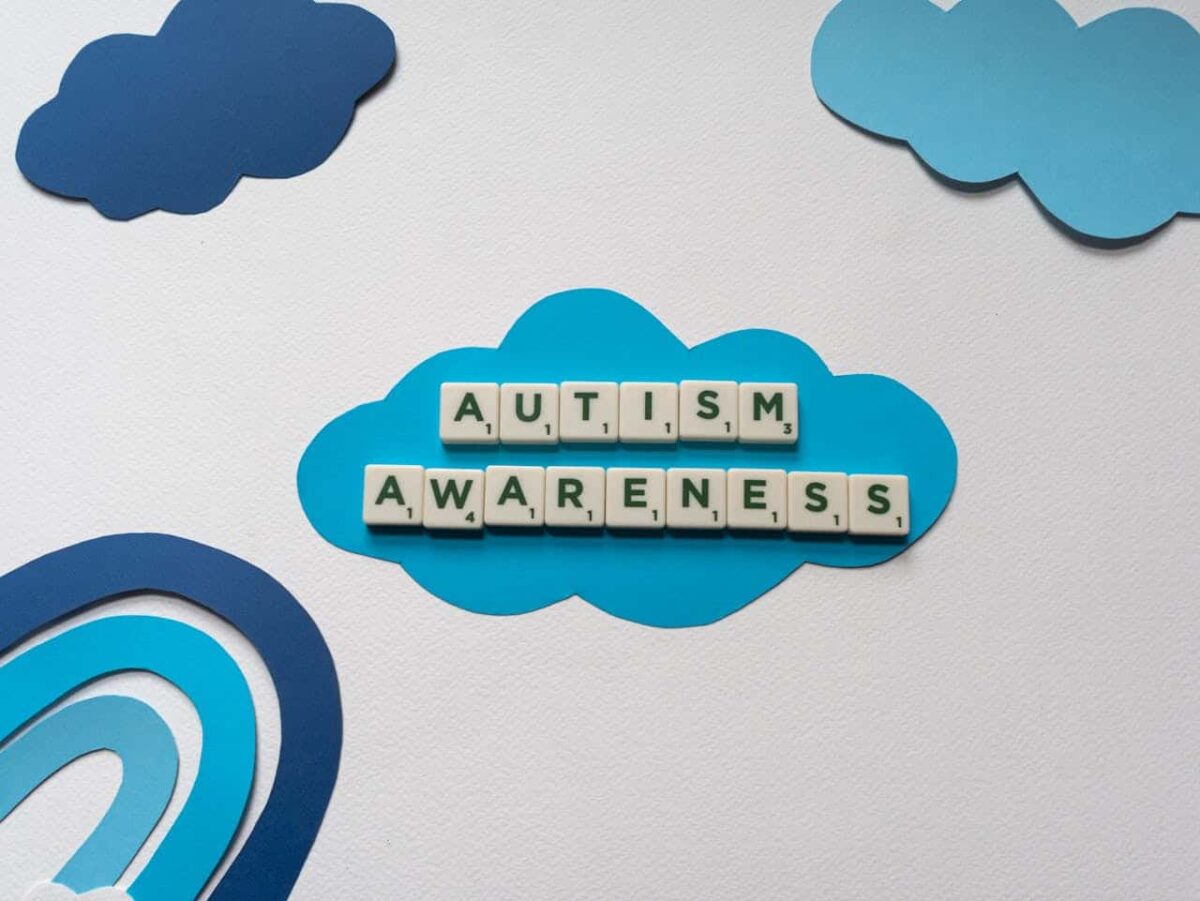Autism Spectrum Disorder (ASD) and Attention Deficit Hyperactivity Disorder (ADHD) are both neurodevelopmental disorders, but they present with distinct characteristics. Both disorders, autism spectrum vs ADHD, often share overlapping symptoms, such as difficulty focusing and impulsivity, which can complicate the diagnosis. Understanding the differences is crucial for ensuring individuals receive the correct treatment and support to thrive.
Autism Spectrum Disorder: A Closer Look
Autism Spectrum Disorder (ASD) is a complex developmental disorder that affects social interaction, communication, and behavior. As one of the many developmental disorders, symptoms can vary greatly, with some autistic children showing repetitive behaviors or rigid routines, while others may struggle with sensory sensitivities and social cues.
Success Stories
“Move Up ABA has been a lifeline for our family. Before starting therapy, our son struggled with daily routines and communication. Now, he’s more independent and even initiated a conversation with a classmate for the first time! The progress we’ve seen in just six months is truly remarkable.”
- Emily R., Silver Spring, Accountant
“As a single dad, I was overwhelmed trying to manage my child’s behavior. The Move Up ABA team not only provided amazing support for my little girl but also taught me practical strategies to use at home. Their in-home sessions fit perfectly with our busy schedule. I’m so grateful for their patience and expertise.”
- Michael T., Rockville, Middle School Teacher
“We were hesitant about starting ABA therapy, but Move Up ABA’s approach put us at ease from day one. Our twins have made incredible strides in their social skills and self-regulation. The therapists are like extended family now, and we couldn’t be happier with our decision to work with them.”
- Aisha and James L., Simpson, Police Officers
Ready to start your child's journey to success? Schedule a free consultation today! 📞 Call (410) 497-8865.
An autism diagnosis is typically made when symptoms meet specific diagnostic criteria outlined in the Diagnostic and Statistical Manual of Mental Disorders (DSM). Behavioral therapy is often the primary treatment for autistic children, helping them develop necessary social and communication skills.
ADHD: What You Need to Know
Symptoms of inattention, hyperactivity, and impulsivity characterize Attention Deficit Hyperactivity Disorder (ADHD). ADHD symptoms can often lead to difficulties in school or work, and children with ADHD may struggle to complete tasks, stay focused, or follow instructions.
ADHD diagnosis relies on meeting criteria set by the DSM, with symptoms persisting over a long period and causing significant impairment. Medication, along with behavioral therapy, is commonly used to treat ADHD, helping individuals manage their symptoms and improve functioning.
Overlapping Symptoms Between Autism and ADHD
Autism and ADHD share several overlapping symptoms, which can make diagnosis more challenging. Difficulty focusing, impulsivity, and social struggles are commonly observed in both conditions, and these similarities can sometimes lead to misdiagnosis.
However, the key difference lies in the underlying causes of these behaviors. While ADHD is typically linked to problems with self-regulation and attention, autism involves a broader spectrum of developmental issues, including communication barriers and restricted interests.
The Role of Behavioral Therapy in Treatment
Behavioral therapy plays a vital role in both autism and ADHD treatment plans. For autistic children, therapy focuses on teaching social skills, reducing repetitive behaviors, and improving communication.
For children with ADHD, behavioral therapy helps address impulsivity, improve attention span, and enhance organizational skills. Therapy tailored to each condition can help manage symptoms and improve overall functioning in everyday life.
Autism and ADHD in Children: Early Diagnosis and Intervention
Early diagnosis of both autism and ADHD is crucial for effective treatment. When identified early, both conditions can be managed through interventions that support the development of social skills, emotional regulation, and cognitive abilities.
For autistic children, early interventions might focus on communication therapies and sensory integration techniques. For those with ADHD, interventions often include behavior management programs and, if needed, ADHD medication to help control symptoms.
Neurodevelopmental Disorders and Mental Health
Both autism and ADHD are classified as neurodevelopmental disorders impacting cognitive and social development. While the two conditions have different symptoms, both can have significant effects on mental health, often leading to anxiety, depression, or other co-occurring disorders.
Individuals with either autism or ADHD may also face challenges related to self-esteem and social integration, requiring supportive mental health resources. Addressing mental health concerns alongside the core symptoms of these disorders is key to improving quality of life.
The Diagnostic Criteria for Autism and ADHD
The Diagnostic and Statistical Manual of Mental Disorders (DSM) provides the criteria used to diagnose both autism and ADHD. These criteria help clinicians differentiate between these disorders and ensure accurate diagnosis based on symptom severity and duration.
For autism, the DSM outlines specific areas of concern, including social communication deficits and restricted or repetitive behaviors. For ADHD, the DSM focuses on symptoms related to inattention, hyperactivity, and impulsivity, which must persist for at least six months.
Autism Spectrum Disorders and Co-occurring Conditions
Autistic individuals may also experience co-occurring conditions, such as anxiety, depression, or sensory processing issues. Identifying and treating these additional challenges is essential for improving overall outcomes for autistic children and adults.
Similarly, individuals with ADHD may also experience anxiety or learning disabilities, which can complicate treatment. Comprehensive care plans that address all co-occurring conditions are crucial for supporting both children and adults with neurodevelopmental disorders.
The Impact of ADHD and Autism on Daily Life
Both ADHD and autism can significantly impact daily life, including school performance, relationships, and work productivity. Children with ADHD may struggle to complete tasks and follow instructions, while autistic children may have difficulty with social interactions or adapting to change.
Providing support tailored to each individual’s needs can help mitigate these challenges. For instance, autism services, such as social skills training and communication support, can help autistic children build stronger relationships. In contrast, ADHD management strategies, including time management and organizational skills, can aid children with ADHD in daily tasks.
Understanding the Root Causes of Autism and ADHD
The causes of autism spectrum disorder (ASD) and ADHD are not fully understood but are believed to be influenced by genetic and environmental factors. While research suggests that autism may involve differences in brain structure and function, ADHD is often linked to genetic factors affecting dopamine regulation. Both conditions can also be affected by prenatal or early childhood environmental factors, which may contribute to their development.
Differences in Social Interaction Challenges
Autistic individuals typically struggle with social communication and understanding social cues, making it difficult to form relationships. This social challenge is often a defining feature of autism, which can lead to isolation or misunderstandings with peers. In contrast, ADHD symptoms generally focus on attention and impulsivity rather than significant social interaction difficulties.
Behavioral Symptoms in Autism vs ADHD
Autistic children often exhibit repetitive behaviors, such as hand-flapping, rocking, or strict adherence to routines. These behaviors are not typically present in children with ADHD, who may be more likely to display hyperactive tendencies or act impulsively without thinking of the consequences. While both conditions involve behavioral challenges, the nature of these behaviors varies significantly between the two.
ADHD and Autism in the Classroom: Strategies for Success
In the classroom, children with ADHD may need structured routines to help them stay on task and minimize distractions. For autistic children, accommodations like sensory-friendly spaces and individualized social skills training can support their learning. Both groups benefit from a tailored educational approach to ensure their academic and social success.
The Role of Medication in Managing ADHD and Autism
Medications are commonly used to treat ADHD symptoms, significantly to help with inattention and hyperactivity. Stimulant medications like methylphenidate are frequently prescribed to help children with ADHD focus better. While medication is less commonly used to treat autism, some children may be prescribed medication to manage associated symptoms like anxiety or irritability.
The Impact of Family Support on Children with ADHD and Autism
Family support plays a critical role in helping children with ADHD and autism navigate their challenges. For ADHD, families can help establish routines, encourage positive behavior, and provide emotional support. In autism, family involvement in therapies and interventions can significantly affect a child’s social and emotional development.
Long-Term Outlook for Individuals with Autism and ADHD
The long-term outlook for individuals with autism and ADHD varies based on the severity of symptoms and the effectiveness of interventions. Many people with ADHD can lead successful lives with proper treatment and support. For individuals with autism, the outlook depends on the level of support needed, with some achieving high levels of independence while others may need lifelong assistance.
Co-occurring Mental Health Conditions in Autism and ADHD
Mental health conditions like anxiety, depression, or oppositional defiant disorder often accompany both autism and ADHD. Addressing these co-occurring conditions is crucial for providing comprehensive care and ensuring individuals can manage both their neurodevelopmental disorders and mental health challenges. Treatment plans should be tailored to address all aspects of an individual’s well-being.
The Importance of Early Intervention for Autism and ADHD
Early intervention can significantly impact the development of children with autism and ADHD. For autism, early speech, occupational, and behavioral therapies can help children build essential life skills. For ADHD, early intervention in the form of behavioral therapy and educational support can improve focus, self-control, and overall academic performance.
The Need for Continued Research on Autism and ADHD
Continued research is necessary to improve our understanding of autism and ADHD and develop more effective treatments. Advances in genetics, brain imaging, and behavioral studies may uncover new insights into these neurodevelopmental disorders. Ongoing research will help clinicians differentiate between the conditions better and provide more precise and effective care.
Early Detection and Diagnosis of Autism and ADHD
Early detection of both autism and ADHD is essential for timely intervention and better outcomes. By identifying symptoms in the early stages, healthcare professionals can implement strategies to help children manage their behaviors and develop the necessary skills.
An accurate diagnosis can sometimes be difficult, as both conditions share overlapping symptoms, such as difficulty focusing and impulsivity. However, with careful assessment, clinicians can distinguish between the two and provide targeted treatments that best suit each child’s needs.
How Autism and ADHD Affect Family Dynamics
Raising a child with autism or ADHD can present unique challenges for families. For parents, understanding and managing symptoms while maintaining a supportive home environment is essential for the child’s growth.
Additionally, families often need to adjust their routines and strategies to accommodate their child’s specific needs. This might involve seeking specialized therapy, adjusting expectations, and fostering patience to create a nurturing atmosphere for children and parents.
Tailored Interventions for Autism and ADHD in School
Both autism and ADHD can affect how children perform in school, requiring individualized support. For autistic children, interventions often focus on social skills training and sensory accommodations, such as quiet spaces or structured routines.
Children with ADHD may benefit from strategies that improve focus, such as breaking tasks into smaller steps or offering frequent breaks. Tailoring interventions to each child’s specific needs helps them succeed academically and develop essential skills.
The Importance of Community Support for Autism and ADHD
Community support is crucial for children with autism or ADHD to thrive outside of the home and school environments. Support groups, recreational activities, and social opportunities allow children to practice social skills and gain confidence in real-world settings.
For families, a strong community network provides emotional support and resources that can ease the challenges of raising a child with neurodevelopmental disorders. This network helps normalize the experience and reduces feelings of isolation.
Parent Training and Education for Autism and ADHD
Parent training and education programs are essential in helping families effectively manage children with autism and ADHD. These programs offer guidance on managing challenging behaviors, structuring routines, and providing positive reinforcement.
Training parents in understanding their child’s specific needs also fosters a better relationship and communication. By working with healthcare providers, families can ensure that their child receives consistent support across all areas of life.
Autism and ADHD in Adults: Continuing Challenges
While autism and ADHD are often diagnosed in childhood, the effects can persist into adulthood, affecting various aspects of life. Adults with ADHD may continue to struggle with attention, impulsivity, and organizational skills in both professional and personal settings.
For those with autism, social interactions, communication, and sensory issues may continue to present challenges. However, with appropriate support, many adults with ADHD or autism can lead fulfilling lives and develop strategies to navigate the world.
The Role of Therapy in Managing Autism and ADHD
Behavioral therapy is an essential component of treatment for both autism and ADHD. In autism, therapies focus on improving communication and social interaction and reducing repetitive behaviors, while in ADHD, therapy often centers on improving attention, impulse control, and organizational skills.
Other therapies, such as occupational or speech therapy, may also be part of the treatment plan. These therapeutic approaches help individuals with autism, or ADHD develop the skills they need to function in daily life.
Social Skills Training for Children with Autism and ADHD
Social skills training is a vital tool for both children with autism and those with ADHD. For autistic children, training focuses on understanding social cues, taking turns in conversations, and making friends in a structured setting.
Children with ADHD may also benefit from social skills training to help them better manage impulsive behavior during interactions. Teaching both groups to navigate social situations can improve relationships and confidence.
Supporting Mental Health in Autism and ADHD
Children with autism or ADHD often face mental health challenges, such as anxiety or depression, which can further complicate their symptoms. Addressing these mental health issues alongside the neurodevelopmental disorder is essential for overall well-being.
Therapies that target emotional regulation, anxiety reduction, and coping strategies can be beneficial. Supporting mental health is key to helping children and adults with autism and ADHD lead fulfilling lives.
Addressing Co-Occurring Conditions in Autism and ADHD
Co-occurring conditions are common in both autism and ADHD, adding another layer of complexity to diagnosis and treatment. Conditions like anxiety, depression, or learning disabilities can be present alongside the primary diagnosis, requiring integrated care.
For individuals with autism or ADHD, addressing both the primary condition and co-occurring disorders ensures a comprehensive treatment plan. Working with healthcare providers to manage all aspects of a person’s health leads to better long-term outcomes.
Navigating Life Transitions with Autism and ADHD
Both autism and ADHD can present challenges during significant life transitions, such as starting school or moving into adulthood. These transitions require careful planning and support to ensure individuals can adapt to new environments and expectations.
For children with ADHD, strategies like creating structured routines and providing visual cues can ease the transition. Autistic individuals may benefit from social stories or sensory accommodations to help them adjust more comfortably.
The Role of Technology in Managing Autism and ADHD
Technology can play a crucial role in supporting children and adults with autism and ADHD. Various apps and tools are designed to improve focus, organization, and social communication skills, helping individuals manage their daily tasks.
For example, apps that provide reminders, timers, or task breakdowns can assist individuals with ADHD in staying organized. Similarly, technology can be used to help autistic individuals improve communication skills and manage sensory processing issues.
Long-Term Care and Support for Autism and ADHD
Long-term care for individuals with autism or ADHD often requires a combination of therapies, medications, and family involvement. While the needs of each person will vary, providing ongoing support ensures they can continue to thrive and lead independent lives.
Monitoring symptoms and adapting treatment plans as individuals grow is important for both conditions. This ongoing care is crucial in helping individuals with autism or ADHD live fulfilling, productive lives as they age.
Conclusion
Understanding the differences and similarities between autism and ADHD is crucial for providing the best care and support to those affected by these neurodevelopmental disorders. Early diagnosis, tailored interventions, and a strong support network can significantly improve the quality of life for individuals with autism or ADHD.
By raising awareness, continuing research, and offering comprehensive therapies, we can help individuals with these conditions navigate challenges and thrive daily. Ongoing support for families, teachers, and caregivers ensures that individuals with autism and ADHD receive the tools they need to succeed socially, academically, and emotionally.










